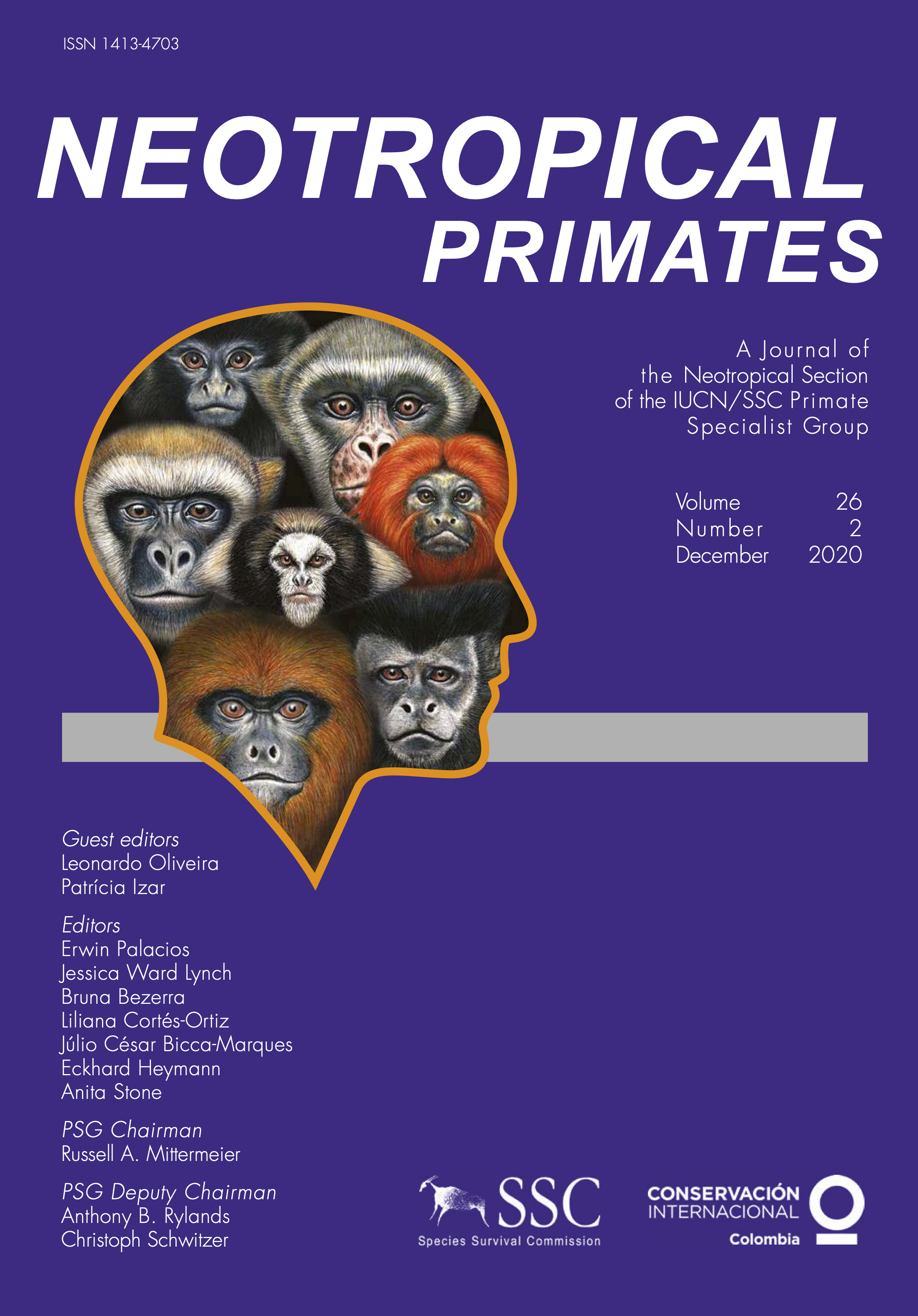Conflitos antrópicos envolvendo primatas neotropicais e a situação de empreendimentos de fauna silvestre no Rio Grande do Sul, Brasil
DOI:
https://doi.org/10.62015/np.2020.v26.56Keywords:
Alouatta, Callithrix, fauna destination, fauna management, public policiesAbstract
Human pressures on wildlife, such as roadkill from vehicles, dog attacks, electrocutions, hunting and illegal captivity, can reduce or locally extinguish primate populations. Three primate species naturally occur in the south of Brazil: Alouatta caraya, A. guariba clamitans and Sapajus nigritus cucullatus and they all have currently become affected by anthropic conflicts, with injured individuals being referred for rehabilitation or long-term captivity. The objective of this work was to investigate the status of wildlife management institutions qualified to receive and assign primates in the State of Rio Grande do Sul. For this purpose, we collected information from authorized wildlife management institutions at the public Online Environmental Licensing System (SOL). We analyzed information about the types of anthropic conflicts involving primates in emergency care and their final destination; in addition, we characterized the Neotropical primates housed in these institutions and the situation of their enclosures according to environmental standards. From 2018 to 2019, 87 cases of primates in emergency care were reported. A. g. clamitans individuals were those most commonly registered in anthropic conflicts. Roadkill and attack by domestic animals showed prevalence in the death of individuals. On the other hand, we observed that orphaned animals showed greater survival in emergency care. Permanent captivity was the most frequent destination among the surviving individuals involved in anthropic conflicts. In 2017, the number of Neotropical primates kept in zoos and private wildlife holders totaled 408 individuals. We found that private institutions of captive wildlife are the main primate host sites. The most abundant genera of primates housed were Alouatta, Sapajus and Callithrix. We identify that more than half of the enclosures are at odds with environmental standards, with a higher incidence of structural problems in the Alouatta enclosures. The circulation of individuals of the genus Callithrix in illegal captivity was found in southern Brazil, outside of its distribution area, and represents a risk of biological invasion.

Downloads
Published
Issue
Section
License

This work is licensed under a Creative Commons Attribution-NonCommercial-ShareAlike 4.0 International License.


